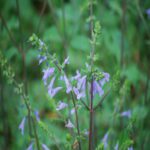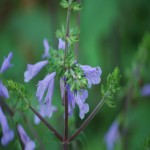A two part series.
You have to admit there is always something going on in Orlando or the surrounding area. Last Saturday was no exception. I ventured out with spouse and our friend, Michele, to the 2010 Florida Wildflower & Garden Festival in Downtown Deland. Never been and I am truly glad we took the trip…

There were loads of venders selling native plants, flowers, pottery, and a list of speakers giving advice ranging from planting native seeds to maintaining a butterfly garden. We walked up and down Indiana Street talking with venders about the many different plants and vibrant flowers, marveled at how beautiful the butterflies were, and questioned how they would survive knowing they would be released from captivity later that afternoon. We enjoyed each others good company.
Then we made our way to the historic Athens Theatre for a 1:00 pm presentation “Landscaping with Native Plants and Wildflowers” by Karen Stauderman, UF/IFAS Extension Agent Emeritus and radio and television host of “Better Lawns and Gardens.” Feeling excited about what will be taught, this was right up our alley.
Karen graciously gave a great presentation and educated the audience about why we should add native plants and wildflowers to our landscape:
Using natives creates a Florida friendly yard while protecting our environment and wildlife, plus you have a yard the whole neighborhood is talking about.
Karen shared nine elements (as well as tips) why we should use Florida friendly plants and wildflowers, and now I am sharing them with you:
1. Right Plant – Right Place
I don’t’ know about you but I have bought more plants and watched them die costing me time and more importantly money. Be sure to buy the right plant and put it in the right place. This not only insures it’s survival but it reduces the need for water, fertilizer, pesticides and pruning. I have been there and done that.
2. Water Efficiently
Half of the water used per household is for the landscape. Watching how and when you water not only saves you money and conserves water; it can help create a healthy lawn as well. The more you water the smaller the plant’s root base becomes which leads to unhealthy plants that are more susceptible to insect infestation and disease. Several years ago I learned a valuable lesson about watering the lawn during the winter months, September to March. My lawn service specialist advised me to count 10 days after a rainfall before watering my lawn. Each time it rains, start the count down over. They were absolutely right. This year I did not water my lawn once during the fall and winter season.

3. Fertilize Appropriately
Less is always best. The more fertilizer you use the more harmful it is to our environment, your yard and our water supply. Invest in a rain barrel, collecting rain water is the best way to water your plants inside and out with the nutrients that nature provides.
4. Mulch
This really is a no-brainer. Mulching helps retain soil moisture, prevents erosion, suppresses weed growth and just looks darn nice with a little creativity on your part
5. Attract the Wildlife
When selecting plants for your yard made sure they will provide food, water and shelter for our diverse wildlife. Then watch the wildlife move in. There’s nothing more fascinating that having your coffee in the morning and watching the butterflies, bees and humming birds. Trust me, I see it every day.
Well, I have to go outside and check on my beautiful yard. Will continue with part II (and the many secrets shared by Karen) as well as more fascinating information stuff soon. Thus, check back at the same channel and get GREEN!
This is Elaine and let the sun shine in.
Elaine Huffman
Author, Publisher, and Environmentally Conscious


